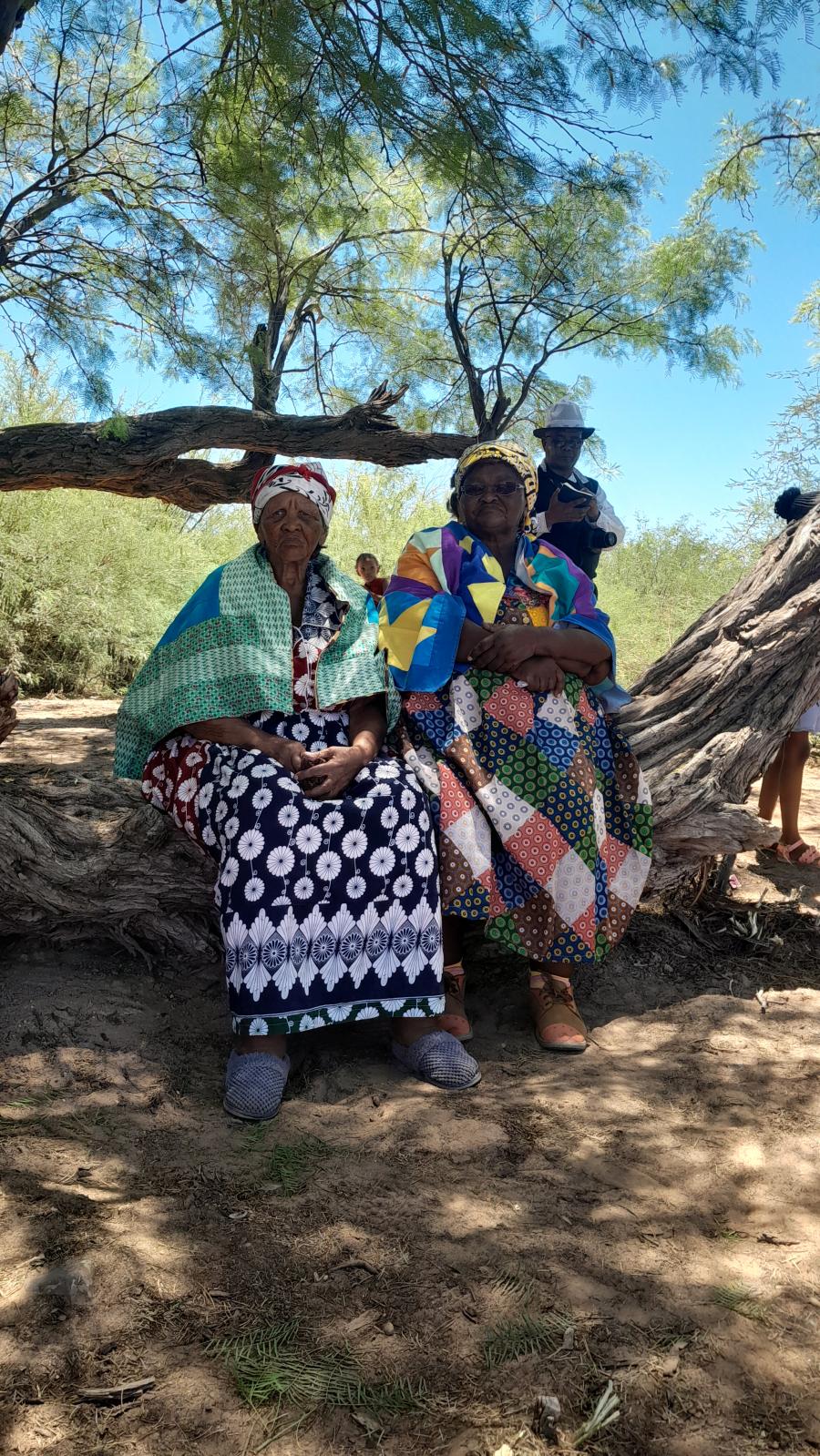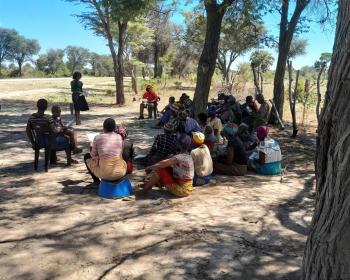Far from their romantic image, most San people today live in circumstances similar to those of the Omaheke Ju/’hoansi, who have worked on White-owned farms since the 1930s. They remain one of Namibia’s most oppressed minorities.
In the Omaheke Region of eastern Namibia only a handful of elderly San still remember a life of full-time foraging in the veld. Beginning in the late 1920s, White settlers flooded into the Omaheke, and by the 1950s the San had lost their traditional lands; foraging ceased to be a viable subsistence strategy. Under South African colonial rule, "homelands" were established for Bantu-speaking Herero and Tswana, but the San were left to eke out a living as laborers on White-owned farms or on the cattle posts of Bantu-speaking pastoralists.
Today, laborers on White-owned farms receive monthly wages and weekly rations, but San workers make less than half of what their non-San counterparts earn. San women working in the farmers’ homes are paid less than one-fifth what domestic servants from other ethnic groups receive. This wage discrimination is typically justified on the grounds that "Bushmen" are incapable of handling money responsibly. Since the weekly rations are usually inadequate to support a family, many San are compelled to purchase necessities at the farm-store on credit and become tied to the farms through a system resembling debt-bondage.
Shortly after independence two resettlement camps were established for indigent people in the region. Since the majority of the camp residents are San too old or too sick to work on the farms, old age pensions are the primary source of income for camp residents. Those not old enough to collect pensions sign on for piecework when farmers come to the camps to collect seasonal laborers. A few San men tend livestock for non-San stock owners in return for milk and a small wage. In the camps, the San have access to sporadic supplies of drought relief, water, housing, small plots of land for kitchen gardens, and--for those few who have livestock--grazing land. They complain, however, that even in these indigent camps, wealthy, politically-connected Hereros and other non-San have taken most of the grazing land and have marginalized San stock-raising efforts. The San say that they will not escape their current condition of serfdom until their own leaders are recognized and San people are allowed to administer the camps.
Although San culture has been under siege in the Omaheke for several generations, it has not been lost. The San continue to conduct their traditional healing and initiation ceremonies--and life in the resettlement camps, away from the scrutiny of the farmers, has meant increased freedom to maintain traditional practices. San kinship and naming systems continue to provide the basis for ordering social relations and providing mutual support. The San’s sharing ethos remains strong, and though they were compelled to speak the languages of other ethnic groups for several generations, they have managed to keep their languages alive. The Omaheke San have so far demonstrated remarkable resiliency in the face of overwhelming pressures threatening to destroy their culture.
Yet they are the most impoverished, marginalized, and stigmatized ethnic community in Namibia. Their extreme marginality alienates them even further and increases their skepticism of even good intentions. As Fredrick Langman, chief designate for the northern Omaheke San, notes: The government gets money from other countries, saying that ‘the San people are very poor and we must help them.’ Then that money comes and it doesn’t go to the San people.
To address the socioeconomic and political obstacles threatening their culture, the Omaheke San have begun to mobilize under the auspices of the Working Group of Indigenous Minorities in Southern Africa (WIMSA) and, more recently, the Omaheke San Trust (OST). Both organizations facilitate training for San community leaders, assist with income-generating initiatives and San-centered educational programs, and promote San culture and language. Although the OST’s efforts have so far targeted San people living in communities off the farms, the Trust will eventually turn its attention to the problems of class exploitation suffered by the many San who still live on the farms in conditions resembling serfdom.



